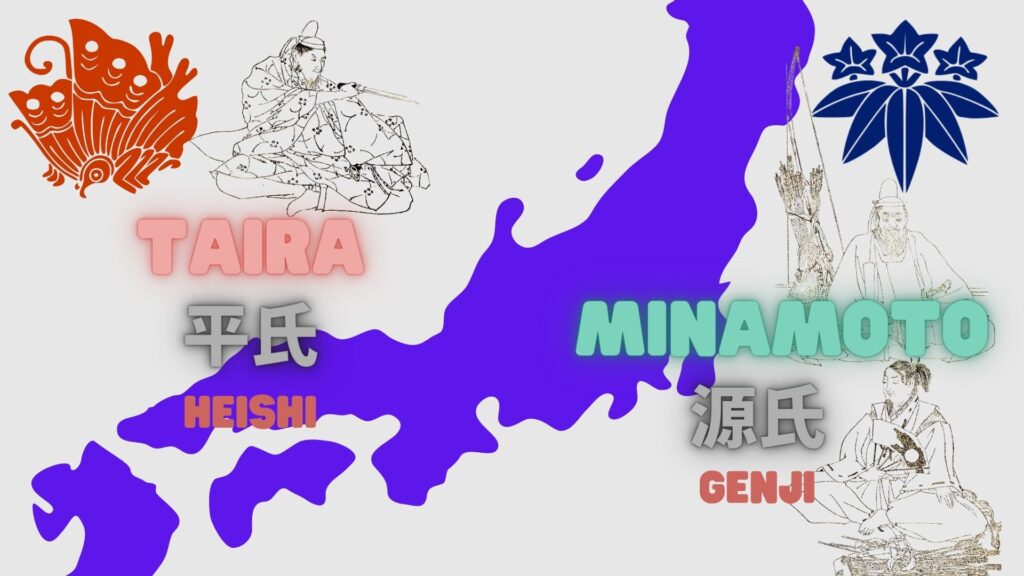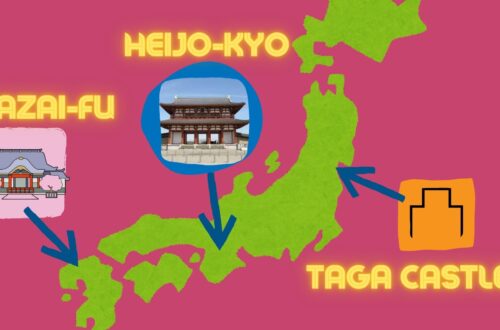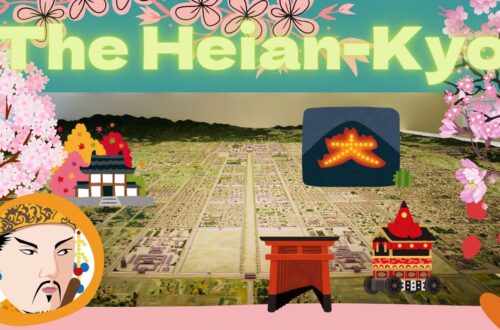
#11 The Emergence Of The Samurai
Click here to go to the YouTube video

The topic of this time is the emergence of the samurai. How did the samurai gain power in the aristocrat-centered Heian period?
今回のトピックは武士の登場です。貴族中心の平安時代、武士はどのように力をつけていったのでしょうか。

In the 10th century, as the Ritsuryo system loosened, local politics changed. Provincial governors rode horses and armed themselves to collect taxes, and peasants and wealthy families also armed themselves to oppose them.
10世紀、律令制度がゆるむにしたがい、地方の政治は変わりました。国司は馬に乗り、武装して税を取り立て、農民や豪族も武装して国司に対抗するようになりました。

In the capital, the Imperial Court recruited low-ranking nobles and others as military officers and put them in charge of guarding the capital as samurai. In this way, warriors specializing in the martial arts were born, and gradually a group of warriors led by a master warlord was formed.
都では、朝廷が下級貴族などを武官に取り立て、侍として都の警備などを担当させました。このように武芸を専門とする武士が生まれ、次第に棟梁をリーダーとする武士団が形成されました。

In 935, Taira-no-Masakado led a rebellion against the Imperial Court in the Kanto region. After conquering the Kanto region by force of arms, Masakado proclaimed himself the new emperor of this region. The Imperial Court finally quelled this rebellion using the power of the samurai warriors.
935年、関東で平将門が朝廷に対して反乱を起こしました。将門は武力で関東を制圧した後、自らを新皇と名乗りました。朝廷は武士の力を使ってようやくこの反乱を鎮めました。

The head of the vanquished Masakado was brought to the capital and displayed on the riverbank. The head, however, is said to have flown back to the Kanto region, crying out for revenge. The head mound of Masakado was created to ease his spirit and it is still enshrined in the office building district of Otemachi in Tokyo’s Chiyoda Ward. It cannot be relocated because of the fear of Masakado’s curse, after an ill-fated attempt to move in the 20th century led to many accidents.
討ち取られた将門の首は都に運ばれ、河原にさらされました。しかし、この首は復讐を叫びならが関東まで飛んでいったと伝えられています。東京千代田区大手町のオフィスビル街に将門の首塚が現在も祀られています。将門のたたりがあるため、移転することができないのです。20世紀には首塚を移転しようとしましたが事故が相次いだためできませんでした。

In 939, Fujiwara-no-Sumitomo led pirates in a rebellion in the Seto Inland Sea. Again, the Imperial Court suppressed the rebellion with the help of the samurai warriors. In this way, the samurai increased their influence.
939年には、瀬戸内海で藤原純友が海賊を率いて反乱を起こしました。こちらも朝廷は武士の力で反乱を押さえました。こうして、武士はその存在感を増していったのです。

Among the samurai warrior clans, the Taira clan who were the descendants of Emperor Kanmu, and the Minamoto clan who were the descendants of Emperor Seiwa, were the most powerful. The Taira expanded their power in western Japan and the Minamoto in the Kanto region.
武士団の中でも、桓武天皇の子孫である平氏、清和天皇の子孫である源氏が有力でした。平氏は西日本を、源氏は関東を中心に勢力を広げました。

In the Tohoku region, the Oshu Fujiwara clan mainly flourished in Hiraizumi after winning two wars. Hiraizumi prospered through the production and trade of gold and horses and left behind Buddhist temples such as the Chuson-Ji temple which is famous for Konjikido (Golden Hall) and the Motsu-Ji temple. Hiraizumi is now registered as a World Cultural Heritage site.
東北地方では、2度の戦乱を制した奥州藤原氏が平泉を中心に栄えました。平泉は金や馬の産出と交易によって栄え、金色堂で知られる中尊寺や毛越寺などの仏教寺院を残し、世界文化遺産に登録されています。

Samurai warriors acquired control of local lands by donating them as manors to aristocrats, temples and shrines in the capital. They built residences in the manors and strengthened their influence in the provinces.
武士は、地方の土地を荘園として都の貴族や寺社に寄進し、土地の支配権を獲得していきました。荘園には館を築き、地方への影響力を強めていきました。
Thank you for reading!



